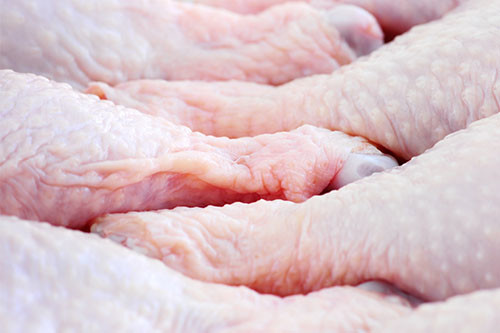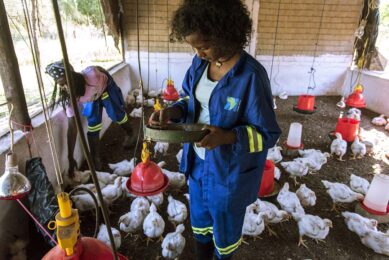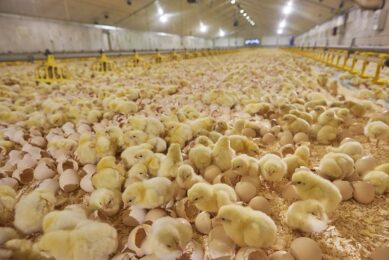Study: AMR resistance detected in chicken samples

Antimicrobial resistance was detected in a proportion of all the types of bacteria examined in chicken samples with resistance to the most clinically important drugs generally more prevalent in chicken isolates than pork.
Human AMR risk low
However, the Food Standards Agency report said the risk of acquiring AMR related bacterial infections from these foods was very low provided they are cooked and handled hygienically.
Study involved raw chicken from UK retailers
The study involved 339 samples of raw chicken (whole or portions) that were collected between the beginning of September and end of October last year from retailers in England, Wales, Scotland and Northern Ireland.
These were tested for Escherichia coli, Klebsiella spp. and enterococci, as well as Campylobacter spp. One isolate of each bacterial type from each sample was randomly selected for additional testing to determine the minimum inhibitory concentration (MIC) for a range of antimicrobials.
Campylobacter spp detected
Campylobacter spp were detected in 85 out of 339 of all chicken samples (25%) (fresh and frozen). Of these, determination of MICs was performed for a total of 157 C. jejuni and 45 C. coli isolates. Of the C. coli isolates 46.7% were resistant to ciprofloxacin, 6.7% resistant to erythromycin and 60% resistant to tetracycline. For the C. jejuni isolates, 38/9% were resistant to ciprofloxacin, 7.6% resistant to erythromycin and 61.8% resistant to tetracycline. All isolates were sensitive to gentamicin and only one C. coli isolate was resistant to streptomycin.
E. coli detected
E. coli were detected more frequently in chicken samples (165/339) than in pork mince (35/342). Of isolates examined for MIC determination, a higher percentage of those from chicken had resistance to ciprofloxacin (26%), nalidixic acid (25%) and gentamicin (7%) compared to those from pork (13%, 3% and 0%). In contrast, resistance to chloramphenicol and tetracycline occurred more often in isolates from pork than from chicken.
Enterococci detected
Enterococci were isolated more frequently from chicken samples (180/339) (53%) than from pork mince samples (103/342) (30%). In the 298 isolates tested, resistance was rare, with only 3 (1%) exhibiting vancomycin resistance and one (0.3%) showing resistance to teicoplanin.
In contrast, Klebsiella species were detected more frequently in pork mince (127/342) (37%) than chicken (22/339) (6.5%). Of the 85 Klebsiella isolates examined for MIC determination, rates of resistance were lower than observed in E. coli isolates for all antimicrobials tested, with the exception of ampicillin, to which Klebsiella species are intrinsically resistant.
The survey took place following an authoritative report by a group established by the Advisory Committee on Microbiological Safety of Food (ACMSF), which in the spring made a number of recommendations to the FSA.

FSA comment on the findings
Commenting on the findings, Steve Wearne, FSA direct of food policy, said that as well as reducing antibiotic use on farms it was important to understand the role that food plays in AMR.
“We are working with the Quadram Institute in Norwich to understand how resistance arises and how resistant bacteria survive and are transmitted through the food chain.”
Mr Wearne praised the food and farming industry for taking its stewardship role seriously: “The use of antibiotics in the poultry meat sector declined by 82% between 2012 and 2017 and antibiotic use in UK pigs has halved between 2015 and 2017. There is still more for industry to do and we are challenging all food production sectors to go further to reduce the levels of antibiotics they use to help with the fight against AMR.”
RUMA comment on the findings
Gwyn Jones, chair of the Responsible Use of Medicines in Agriculture (RUMA) Alliance, said the FSA’s new research would add to the bank of knowledge and help identify additional interventions that reduce any antimicrobial resistant bacteria in food, while safeguarding continued access to antibiotics that treat disease and prevent pain or suffering in animals.
British Poultry Council comment on the findings
Richard Griffiths, British Poultry Council chief executive, added that the sector was upholding the UK’s position at the forefront of international efforts to keep antibiotics effective for future generations and tackling antimicrobial resistance.
“Through the BPC Antibiotic Stewardship, we’re trying to better understand the link between antibiotic use and resistance in poultry production chain.”
The FSA will be discussing AMR at its meeting in Cardiff on 19 September.
Join 31,000+ subscribers
Subscribe to our newsletter to stay updated about all the need-to-know content in the poultry sector, three times a week. Beheer
Beheer








 WP Admin
WP Admin  Bewerk bericht
Bewerk bericht